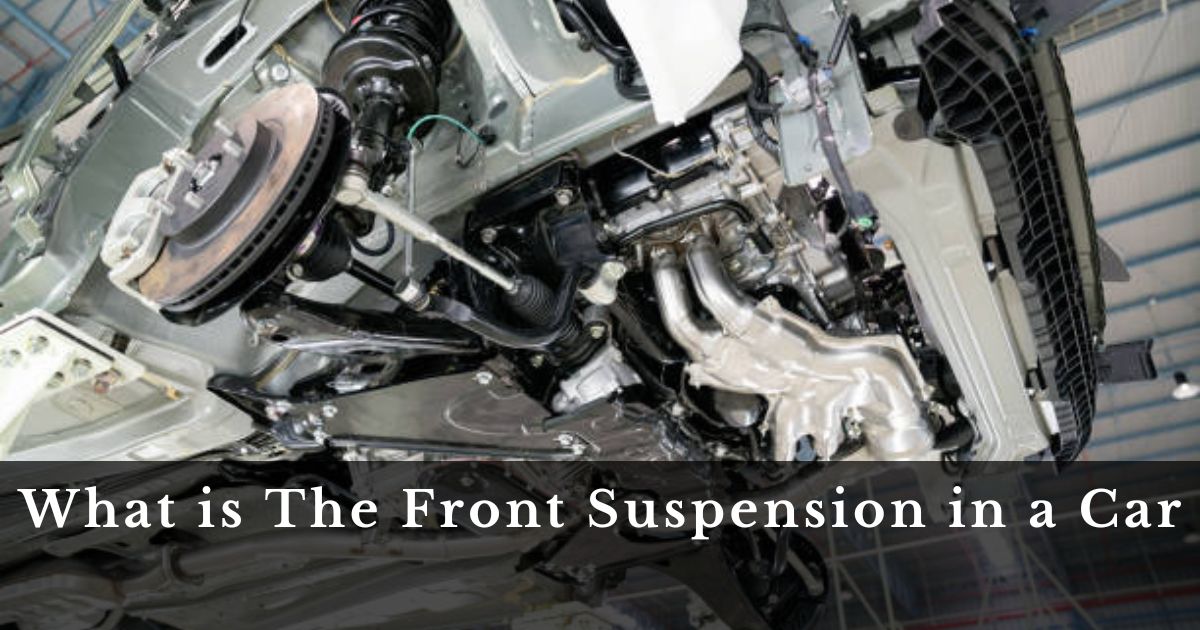What is the front suspension in a car, When we drive, we usually think about the engine, wheels, or how cool our car looks. But have you ever thought about how your ride stays smooth, even on rough roads or when turning sharply? That’s where the front suspension comes in. It’s like the secret ingredient that makes your drive comfortable and stable. Let’s find out more about it and why it’s so important for your driving.
Understanding the front suspension system in a car is crucial for any driver or enthusiast. Let’s delve into the basics of what it entails, without getting lost in technical jargon.
What is Front Suspension?
Front suspension refers to the system in a car that supports the front wheels, allowing them to move up and down independently of each other. It’s essential for maintaining stability, control, and comfort while driving.
Components of Front Suspension
Shock Absorbers: These are the components responsible for dampening the impact of bumps and uneven surfaces, ensuring a smoother ride.
Springs: Springs support the weight of the vehicle and help absorb shocks from the road.
Control Arms: Also known as A-arms, control arms connect the wheel hub to the chassis and allow for vertical movement.
Stabilizer Bar: This bar, also called a sway bar, helps reduce body roll during cornering by linking the left and right wheels together.
Types of Front Suspension
Independent Suspension: Each wheel moves independently, providing better handling and ride comfort.
Dependent Suspension: Both wheels are connected, meaning when one wheel moves, the other moves in tandem.
How Front Suspension Works
When the car encounters bumps or uneven terrain, the suspension system compresses and rebounds, absorbing the shock and maintaining tire contact with the road. This action ensures stability and control while driving.
Importance of Front Suspension
Safety: A properly functioning front suspension system ensures optimal tire contact with the road, improving braking and steering responsiveness.
Comfort: It helps absorb shocks and vibrations from the road, providing a smoother and more comfortable ride for passengers.
Handling: A well-tuned front suspension enhances the car’s handling and stability, especially during cornering and maneuvering.
Maintenance Tips
Regular inspection and maintenance of the front suspension system are crucial for ensuring safety and performance. This includes checking for worn-out components, leaks, and proper lubrication.
Regular Inspections: Check the front suspension components, including shocks, struts, control arms, and bushings, for signs of wear or damage.
Replace Worn Parts: If you notice any signs of wear or damage, such as leaking shocks or worn-out bushings, replace them promptly to prevent further damage and ensure safety.
Wheel Alignment: Proper wheel alignment is essential for the performance of the front suspension. Get your wheels aligned regularly to prevent uneven tire wear and maintain stability.
Professional Service: For complex suspension repairs or adjustments, it’s to consult a qualified mechanic or technician who has the expertise and tools to do the job correctly.
The front suspension system is a vital component of any vehicle, contributing to safety, comfort, and performance. Understanding its basics can help drivers appreciate its importance and take better care of their cars.
FAQs
How often should I check my front suspension?
It’s recommended to have your front suspension inspected during routine maintenance, typically every 12,000 to 15,000 miles.
What are signs of front suspension problems?
Signs include uneven tire wear, excessive bouncing or swaying, knocking noises while driving, and a vibrating steering wheel.
Can I drive with a bad front suspension?
It’s not safe to drive with a compromised front suspension as it can affect steering control and braking performance.
How long does front suspension last?
The lifespan of front suspension components varies depending on driving conditions and maintenance but typically ranges from 50,000 to 100,000 miles.
Is front suspension repair expensive?
Repair costs can vary depending on the extent of damage and the specific components needing replacement, but it’s essential not to overlook necessary repairs for safety reasons.



